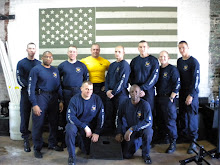CF 864 - 9:00a.m./4:14p.m./5:15p.m./6:15p.m.
WOD for time:
"Stephen"
30-25-20-15-10-5 rep rounds of:
GHD sit-up (sub Abmat Sit-ups)
Back extension (sub Weighted Good mornings)
Knees to elbow
95 pound Stiff legged deadlift
“Each of us should please his neighbor for his good, to build him up.”
Romans 15:2
You can conquer almost any fear if you will only make up your mind to do so. For remember, fear doesn't exist anywhere except in the mind.
Dale Carnegie
CrossFit 864 Kids Camp June 28 - July 1, 2010 10a.m.- 12p.m. Sign up soon only 50 spots available. $50.00
CrossFit 864 Strength Based WOD's - 6pm on Monday and Thursday.
Each strength cycle continues for three weeks and focuses on 2 major lifts. If you do not start at the beginning of the cycle you will not be able to jump in during the middle of it.
We work up to one rep max lifts in each move and focus on moving heavy weight each time and building strength so form and technique are very important! Heavy squats, deadlifts, floor press and overhead press are a great way to get stronger and improve all of your other workouts if performed correctly. If not performed correctly these lifts can result in injuries and that is something we work extra hard to avoid at all times.
If you are interested contact Jay and he will discuss this in further detail. The new strength cycle begins Monday with the deadlift.
Deadlift Form
Many fear the Deadlift. Maybe it’s the name. Deadlift. Or maybe it’s the movement. I often get told it’s not healthy for the lower back.
The Deadlift is the best exercise for back strength. It teaches you to keep the lower back rigid under a load.
But yes, Deadlifts can lead to injury if not performed correctly.
Here are: 7 tips for a safer Deadlift.
1. Don’t Hyperextend The Back. Hyperextending the back at lockout puts posterior stress on the lower spine. This can lead to intervertebral disk injury, like hernias. The correct way to lockout the weight is:Lift the chest upPull the shoulders backBring hips, knees & lower back into extension simultaneouslyDon’t overdo the back extension.
2. Don’t Roll The Shoulders. Rolling & shrugging the shoulders at the top is bad. You could injure your neck. Chest up, shoulders back, full extension, you’re done.Some roll & shrug at the top to hit the traps more. Heavy Deadlifts will give you enough trap work. If you feel you need more, do Power Cleans.
3. Keep The Bar Close To Your Body. Two reasons:The shortest distance between start & top is a straight vertical lineThe closer the bar, the smaller the stress on your lower backIt’s impossible to achieve a bar path perpendicular to the floor. However you should strive for this model. How? Try this:Use your lats to pull the bar toward your bodyStart the lift from the floor with the bar touching your shins
4. Keep Your Elbows Locked. There’s no better way to get injured than by letting 200kg straighten your elbows for you.The elbows add nothing to the lift: the weight is lifted by your knees, hips & back, not by the arms. Deadlift safely. Start the lift with the elbows locked.
5. Brace Your Abs. Your back muscles support your spine from the back, your abs from the front. Bracing the abs increases the pressure in your abdomen, which leads to increased stability. How do you use bracing to your advantage?
Set up for the Deadlift:
Take a big breath
Squeeze against it
Breathe when the bar is back on the floor
Never breathe while lifting. It’s unnatural & puts more stress on the lower back.
6. Look Forward. Looking down will make the bar leave your body. As we discussed in point 3, this puts more stress on your spine. Look at a point half way up the wall facing you. This will keep your chest up & upper back tight.
7. Squeeze Your Glutes. Contrary to what many do, the Deadlift is not a pull back. Lockout occurs by extending knees, hips & back simultaneously. Think hip forward, not pulling back.The best way to do this is, is by squeezing your glutes. This will bring them forward. If you can’t involve your glutes, try some glute activation.Do NOT hitch - At the middle of the movement, do not jerk the bar up to achieve the final concentric phase of the movement. To get past the sticking point, keep the momentum going from the bottom of the movement, in one smooth action.As with all exercises, a fluid motion is best to prevent a potential injury. The spine is especially susceptible to injury. Never jerk the weight. Pulling and jerking on the bar to get to full lockout is poor form and a sure way to get injured. This means that you need to work on your lockout strength.
8. Always control the weight and NEVER bounce the weight off the floor at the bottom of the rep - this is considered sloppy form and could lead to a back injury by rounding and not maintaining support throughout your spine. Do not intentionally drop the bar on each rep unless it is a failed lift and you have to bail out of it. Control the weight throughout the entire lift.
Show up today and lift heavy.
Be Strong!
Jay and Janice
Subscribe to:
Post Comments (Atom)





















No comments:
Post a Comment